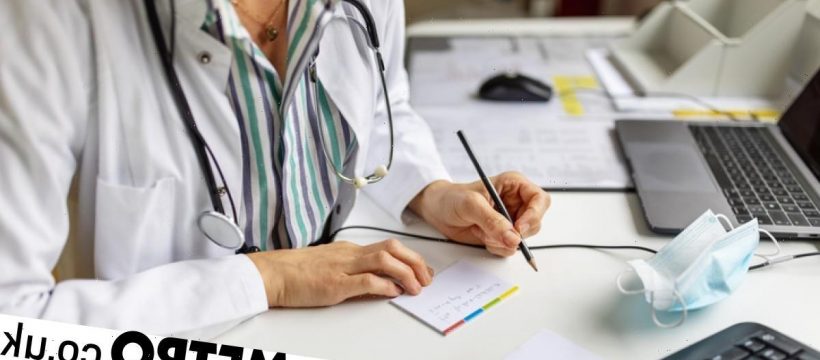‘So tell me, why do so many GPs work part-time these days?’ asked a patient at the end of a consultation.
I found myself blustering through a reply about workload, clinical pressures and decision-making fatigue.
It was only later when I had time to reflect on the conversation, that I realised I had been offended by the question. Most part-time GPs work over their scheduled hours, and we need to set the record straight.
If you read certain comments sections of online articles about doctors, you’d be mistaken for thinking GPs – especially those of us who are part-time – are responsible for the downfall of the NHS.
If only we’d stop being part-time, then long waits in emergency departments and for ambulances would be solved. Not to mention 6million patients on waiting lists, and difficulties seeing a doctor face-to-face would suddenly be a thing of the past.
Simplifying it like this is an insult to me and so many of my colleagues, who despite being classed as part-time, rack up more hours a week than the average UK working week.
GPs talk about sessions worked, and one session is defined as four hours and 10 minutes. Traditionally, a full-time working week would consist of 10 sessions (41 hours) – mornings and afternoon, with (unaccounted for) home visits and meetings squeezed in between the clinics.
As a part-time GP, I work three – sometimes four – days a week both in and out of hours. That’s five to seven sessions, although GPs who end up working full-time hours can mistakenly be classed as part-time due to these archaic definitions.
Most GPs will now tell you that the workload has become so intense that a session has now stretched to six or seven hours, meaning a half-day has essentially become a full day’s work.
The insinuation that an entire group of professionals are work-shy by being part-timers is offensive
We will always be delayed by emergency presentations who need to be admitted to hospital, or patients needing a little more time. But the allotted four hours doesn’t take into consideration any of the hidden work GPs do – masses of admin, including prescriptions, results and emails; mentoring staff; teaching students and trainees; managing the practice; reading new guidance and updates.
The complexity of our work is also underestimated. Reading and actioning 50 letters is time consuming in itself, but when each is attached to a person, their story and a clinical scenario to manage – the time taken increases.
I qualified as a GP nearly 10 years ago and the job has changed enormously in that time – in terms of intensity, pressures and expectations. Coffee breaks and lunch were regular and valued as an opportunity to talk through cases with colleagues. These days, most of these ‘breaks’ continue at the desk, in an attempt to get through the workload.
I’m now the archetypal female part-time GP – I have two children under three and work part-time so I can be a mum.
Quite frankly, I would still be working ‘part-time’ even if I didn’t have children and there shouldn’t be an obligation for GPs to have to justify reasons for their work patterns. The NHS is not conscripted and its staff are not indebted to society.
At any point, we can make the decision to take the skills we have worked hard to attain and seek employment outside the NHS, where working life is less stressful and more lucrative.
The GP Worklife survey published this month showed that the average GP is working 6.3 sessions, which – going by the definition of a session – would be the equivalent of just over 26 hours a week and is part-time (anything under eight sessions a week is considered part-time). But the survey actually found the average amount of hours worked was 38.4.
They’re essentially classed as part-time but are working full-time hours. The clinical sessions are what the public see, but the extra hours being put in behind the scenes are what are unaccounted for and unseen.
To put this into perspective – an average nine to five full-time work week – Monday to Friday with an hour for lunch – works out at 35 hours a week.
As part of Doctors’ Association UK’s (DAUK) GP Crisis campaign – which aims to highlight and solve the issues in general practice – we gathered stories from frontline general practices and heard of 14 hour days and more than 60 patient contacts a day as standard.
https://www.instagram.com/p/CP8L3scIj1r/
This is way above the 25 patient contacts per day considered safe, according to Dr Mary McCarthy, vice-president of the European Union of General Practitioners.
The insinuation that an entire group of professionals are work-shy by being part-timers is offensive.
In a similar vein to the toxic reports of GPs doing nothing during the pandemic – it is hard to stomach these comments when the reality for primary care is one of daily firefighting. We have limitless amounts of work without the resources to match, coupled with increasing complaints and sometimes abuse from patients.
Even before the pandemic, the NHS was on its knees and the last two years have placed even greater strain on the system. GPs are walking away from the profession and the number of fully qualified GPs working in the NHS has dropped from 28,129 in December 2019 to 27,757 in January this year.
If we keep working the way we have been, we’re at risk of burnout. The numbers of doctors presenting to support service Practitioner Health – which is a free, confidential NHS primary care mental health and addiction service with expertise in treating health and care professionals – attest to this happening.
Part-time and flexible working for GPs – as well as the wider NHS – needs to be embraced to improve both recruitment and retention of staff, which is ultimately better for patient care.
We also need to take a look at how we document our time and replace ‘sessions’ with the actual hours we work to finally quash the ‘lazy part-time GP’ narrative.
Part-time GPs are not the cause of the problems within the NHS, we’re the solution and it helps no one to blame us.
Do you have a story you’d like to share? Get in touch by emailing [email protected].
Share your views in the comments below.
Source: Read Full Article

